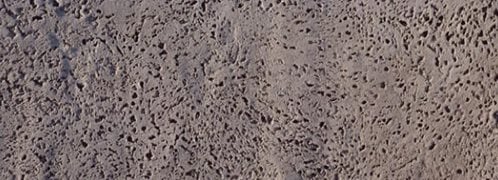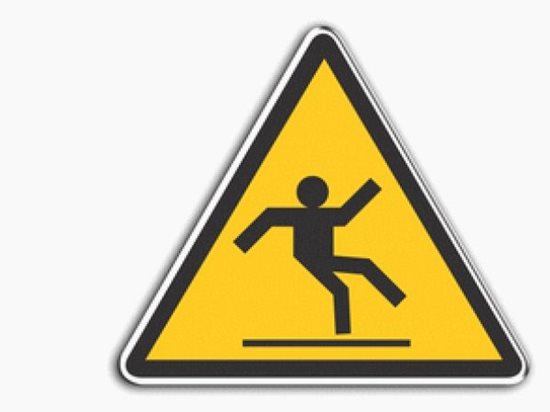- Concrete Stamps
- Get the Look - Stamping Pictures
- Buying Tips for Concrete Stamping Tools: Advice that will help you make smart choices
- Concrete Stamp Cost
- Types of Concrete Stamps: A comparison chart of popular stamps & patterns
- Stamping & Texturing Tools
- Concrete Stamp Mats
- Concrete Texturing Skins
- Medallion Stamps
- Texture Rollers
- Step Forms & Liners
- Installing Stamped Concrete
- How to Stamp Concrete
- Coloring Stamped Concrete
- Concrete Stamp Release Agent
- Sealers for Stamped Concrete
Making Slippery Stamped Concrete Slip-Resistant
Avert potential lawsuits by following this advice on how to improve the slip resistance of stamped concreteProducing awesome-looking decorative stamped concrete is something to take great pride in. But that’s only half the equation. Does your company know what to do if it gets caught up in a legal situation involving slip-and-fall accidents? Hopefully, you will never find yourself having to defend your decorative concrete work or your company’s actions. But if you do, you can learn some valuable lessons from this story.
Recently, I was asked by an attorney based in South Carolina to act as an expert witness in a lawsuit involving a case in which someone had allegedly slipped and fallen on a stamped concrete sidewalk. The client he was representing was a local college. My experience was very eye opening, and I felt compelled to share it with you in hopes of shedding light on certain circumstances many contractors never even consider.
Case in pointI usually receive a dozen or so requests like this a year, and I have always declined, with the fear that I could be hanging an industry colleague out to dry. What made this particular case different was the fact that one of the defendants was a small stamped concrete contractor who could easily be put out of business, depending on the outcome of this lawsuit. I felt compelled to get involved after reading the depositions from both sides and reviewing the pictures of the stamped concrete the plaintiff supposedly slipped on. My main motivation was to defend our industry.
In reviewing the photographs, I was looking to see if the contractor was able to obtain full texture within the stamp imprint, or if the texture was too light. If concrete starts getting hard during the stamping process, this greatly reduces the amount of texture that can be achieved, which in certain scenarios can contribute to a slippery surface, especially in the presence of moisture. This was not the case here, and the stamp imprint had a full texture. In addition, a nonskid additive was used in the sealer, and the slope of the sidewalk was minimal. Overall, I felt the quality of the stamped concrete job was very good.
After taking a trip to the college to tour the actual site with my attorney, I met with the plaintiff’s attorney for a visit that lasted an hour and felt like an interrogation. The young, aggressive attorney had obviously done his research based on the questions he asked me and the resources he referenced, dating as far back as 10 years. One question he asked was whether I had read an article in a trade journal by a so-called industry expert who claimed he did not like stamped concrete because it was slippery. I hadn’t read the article, but I took offense to the attorney’s implications. Stamped concrete surfaces have been around since the 1950s, and many of us have earned a wonderful living producing stamped concrete, with extremely satisfied customers and no slip-and-fall claims. Although none of this attorney’s fact-finding missions implicated me in any way, it was a valuable learning experience.
After my visit to the college campus, I received an email two days later informing me that the case had been settled out of court for a very low sum, saving the college virtually hundreds of thousands of dollars and sparing the concrete contractor. Yes, there was a feeling of redemption because our side had won. But I also realized that we live in different times and some people want to take unfair advantage of situations when they see an opportunity.
 Ashlar Cut Slate Stamp
Hand-tooled with a pronounced texture
Ashlar Cut Slate Stamp
Hand-tooled with a pronounced texture
 Herringbone Used Brick
Tool Size is 44" x 27"
Herringbone Used Brick
Tool Size is 44" x 27"
 Rock Salt
Seamless travertine off-set
Rock Salt
Seamless travertine off-set
 Bluestone Texturing Skin
6 skin set - only $1,173.20
Bluestone Texturing Skin
6 skin set - only $1,173.20
 Five Point Star Medallion
Concrete stamp only - $292.00
Five Point Star Medallion
Concrete stamp only - $292.00
 Brickform Stamping Tools
Precision stamping tools
Brickform Stamping Tools
Precision stamping tools





